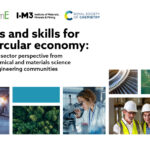A team co-led by engineers at the University of California San Diego has developed a new design strategy for metal alloy negative electrodes that could significantly improve the performance and durability of next-generation solid-state batteries. The work could help advance the path toward practical, high-performance energy storage for electric vehicles. The team focused on … [Read more...] about New alloy design could power solid-state batteries that charge faster and last longer
Materials
3D-printed material breakthrough could enable new twist for vehicle safety
Researchers from universities in Scotland and Italy have developed new form of 3D-printed twisting metamaterial that can mitigate the effects of impact could lead to improved crash protection for vehicles in the years ahead. The material has a unique lattice shape that allows it to twist into itself to effectively protect against a range of impact types and … [Read more...] about 3D-printed material breakthrough could enable new twist for vehicle safety
New open-source software enables efficient 3D printing with multiple materials
A PhD student in the Department of Computer Science at the University of Colorado Boulder has developed a new design system software package that could reshape the way in which engineers design multi-material objects – and has released it open source. Charles Wade’s open-source tool, which he dubbed OpenVCAD, maps not just shapes but also where different materials belong in … [Read more...] about New open-source software enables efficient 3D printing with multiple materials
Printable aluminium alloy sets strength records, may enable lighter aircraft parts
MIT engineers have developed a printable aluminium alloy that can withstand high temperatures and is five times stronger than traditionally manufactured aluminium. The new printable metal is made from a mix of aluminium and other elements that the team identified using a combination of simulations and machine learning, which significantly pruned the number of possible … [Read more...] about Printable aluminium alloy sets strength records, may enable lighter aircraft parts
IOM3 publishes joint report with IChemE and RSC on skills shortages and the circular economy
The Institute of Materials, Mineral & Mining (IOM3) has joined with the Institution of Chemical Engineers (IChemE) and the Royal Society of Chemistry (RSC) to publish a report highlighting the UK’s skills gaps and the challenges that the nation faces in developing the workforce required to deliver a successful circular economy, as well as setting out steps to address those … [Read more...] about IOM3 publishes joint report with IChemE and RSC on skills shortages and the circular economy






